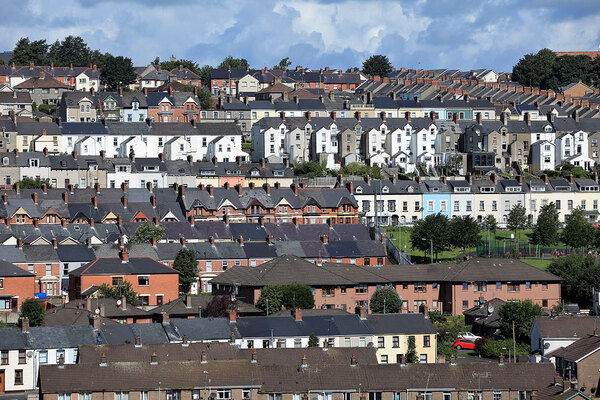You are viewing 1 of your 1 free articles
Time to end the use of (un)affordable rent
The government’s affordable rent product, introduced a decade ago, means some tenants are being fleeced for no good reason other than they can be and it has to stop, argues Martin Wicks
Recently, I discovered that a tenant living in a three-bedroom house on Penhill, a 1950s council estate in Swindon, was paying £166 a week for so-called affordable rent. Not far away, in exactly the same type of house, another tenant is paying £88 a week. What possible rationale could there be for such a huge difference? How did this happen?
This is a property which has been converted from social rent to affordable rent when empty. This is happening because:
- The level of grant available from Homes England (an average of almost £58,000 by the end of March 2021) is insufficient to fund building social rent homes alone
- Restrictions on the use of the Right to Buy receipts mean than only 40% of the cost of building a new home can be covered by them, so the rest has to be found from existing resources or borrowing
- Homes bought on the market (often ex-council homes) charge affordable rent
Nationally, in England only 1.9% of council homes charge affordable rent; 30,222 at the end of the last financial year. There are some enthusiastic councils, with up to 25% of their stock charging affordable rent, as in the case of Darlington, although only 15 councils have more than 500 affordable rent properties.
In Swindon, the council has 486 affordable rent homes (4.7% of its stock), some of which have been converted from social rent as part of the funding of regeneration schemes, some bought on the market, often ex-council homes, and charged affordable rent.
Affordable rent in Swindon is on average 39% higher (£33.74 a week extra) than social rent, although for a three-bedroom house it is 50% higher, and 68% higher for a four-bedroom property.
How do tenants cope with these higher rents? If a tenant has their full rent covered by housing benefit, then it’s not a problem for them. Those in work will find themselves in a more precarious position subject to the impact of a change in circumstances, or life events.
A recent Freedom of Information Act request showed that of tenants paying affordable rent in Swindon, 47% were in arrears (228 out of 486), compared to 36% of social rent tenants (3,542 out of 9,789). The average arrears are £150 higher for affordable rent than social rent.
We are awaiting an updated figure for the percentage of tenants whose entire rent is covered by housing benefit. It was around a third. Take that third out of the equation and the percentage of tenants who pay all or part of their rent who are in arrears is a staggering 55%. Obviously many of them are struggling to get by month by month.
These figures certainly reflect the impact of COVID-19. According to the English Housing Survey, during the financial year 2020-21, the number of social housing tenants in full-time work fell from 31% to 25%, and in part-time work, slightly down from 14% to 13%. Over half (51%) of social renters were retired, in full-time education or ‘inactive’, a group which includes those who have a long-term illness or disability and those who were looking after the family or home.
Affordable rent was introduced by the coalition government as part of its austerity programme, to enable them to provide a lower level of grant for new build. It is counter-productive because it costs the Treasury more in housing benefit than social rent homes. It is grossly unfair because tenants can be paying nearly double the rent for the same type of property for the same service.
“Conversion from social rent to affordable rent is pernicious. There should be a moratorium on its use”
Although we don’t have national statistics which separate levels of arrears for social rent and affordable rent, the overall trend of arrears is upwards. Arrears in English authorities with council housing increased by 29% from 2018-19 to 2020-21: £245.4m to £317.2m. The freezing of benefits can only promote this upward trend and the difference between social and affordable rent increases year on year.
Even the Conservative thinktank the Centre for Social Justice states: “Affordable rent was developed with the intent of maximising new social housing delivery in the context of significantly reduced grant. However, the method of linking affordable rents to market rents has had the effect of pricing out low-income renters from higher-cost areas, while forcing housing benefit to ‘take the strain’ of more expensive rents.”
It is the tenants who pay full rent, or part of it, who ‘take the strain’ as well, since they tend to be in lower-paid and precarious work.
Conversion from social rent to affordable rent is pernicious. There should be a moratorium on its use. But ultimately so long as the current funding policy is maintained, then the slow displacement of homes paying social rent with those paying affordable rent will continue. For housing associations, 10% of their stock charges affordable rent.
Government grant for new housebuilding should only be available for social rent homes and it has to be much higher than the current average. It is high time that there was a concerted effort to demand that the charging of affordable rent is ended.
Sign up for our tenancy management newsletter
Already have an account? Click here to manage your newsletters














